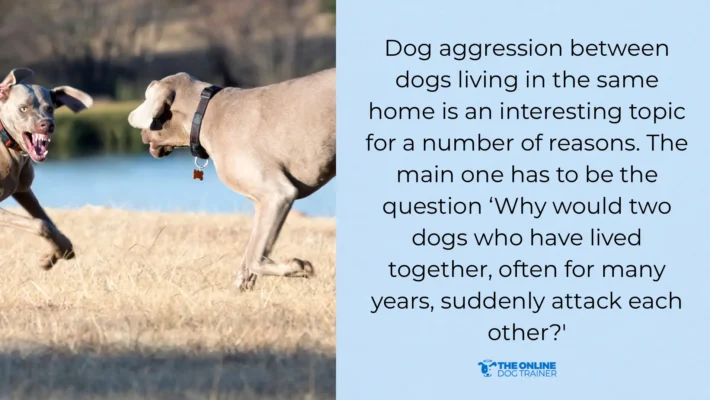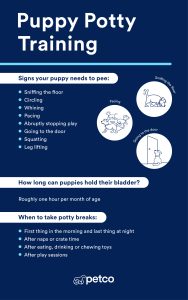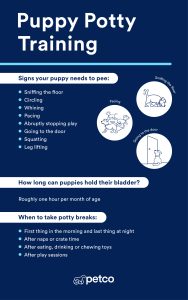Is your dog showing signs of aggression, leaving you worried and unsure of what to do next? You’re not alone, and the good news is that you can take steps to change this behavior.
Understanding why your dog acts aggressively is the first key to stopping it. You’ll discover simple, effective ways to calm your dog and build a stronger, safer bond. Keep reading—your dog’s happier, peaceful future starts here.
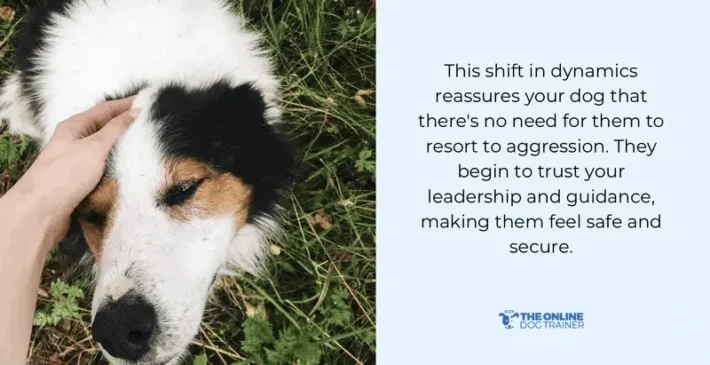
Credit: theonlinedogtrainer.com
Signs Of Aggressive Behavior
Aggressive behavior in dogs can be serious. It is important to recognize the signs early. Watching your dog closely helps prevent incidents.
Understanding the signs helps you act wisely. Dogs show aggression in different ways. Knowing these helps keep everyone safe.
Common Aggression Types
Dogs may show aggression for many reasons. Some common types include fear, territorial, and possessive aggression. Each type has clear signs.
- Fear Aggression:Dog may growl or try to escape.
- Territorial Aggression:Dog barks and lunges at strangers near its space.
- Possessive Aggression:Dog guards food or toys and snaps if approached.
- Redirected Aggression:Dog attacks another dog or person when frustrated.
Body Language Cues
Dogs use body language to show how they feel. Watching these signs can help you know if a dog is aggressive.
| Body Language | What It Means |
|---|---|
| Stiff body | Dog is tense and ready to react |
| Raised hackles | Dog feels threatened or aggressive |
| Growling or snarling | Warning sign of aggression |
| Bared teeth | Dog is ready to bite |
| Direct stare | Dog is challenging or warning |
| Tail held high and stiff | Dog is alert and may attack |
| Flattened ears | Dog is scared but may bite if cornered |
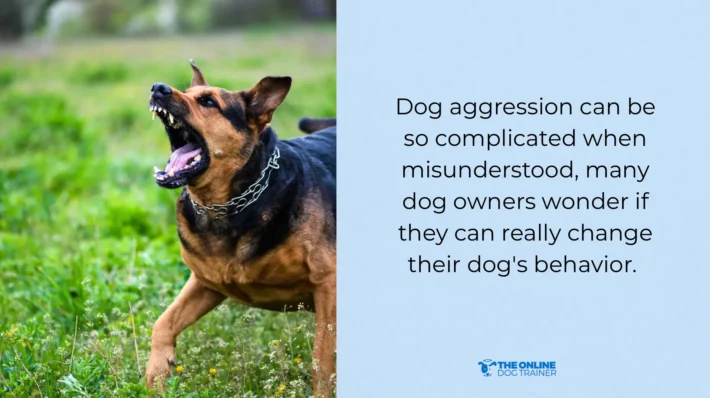
Credit: theonlinedogtrainer.com
Causes Of Dog Aggression
Dog aggression can be a serious issue for pet owners. Understanding its causes helps in managing and reducing aggressive behavior effectively.
Aggression in dogs can stem from various factors, including genetic influences, environmental conditions, and health-related issues. Each of these plays a significant role in shaping a dog's behavior.
Genetics And Breed Tendencies
Some dogs are naturally more aggressive due to their genetics. Certain breeds have a predisposition for aggression based on their history and original breeding purposes.
Breeds like Rottweilers and Dobermans are known for their protective instincts. These traits can sometimes manifest as aggression if not properly managed.
- Breeds developed for guarding might display higher aggression
- Genetic traits can influence a dog’s response to threats
Environmental Triggers
The environment plays a crucial role in a dog's behavior. Stressful situations or changes in surroundings can trigger aggression.
Dogs exposed to chaotic environments may react aggressively. Lack of socialization in early life can also lead to fear-based aggression.
- New environments can cause anxiety
- Loud noises might provoke aggressive responses
- Social isolation can increase fear aggression
Health Issues
Health problems can significantly affect a dog’s temperament. Pain or discomfort often leads to aggressive behaviors as a defense mechanism.
Dogs in pain may snap or growl to protect themselves. Conditions like hypothyroidism can also contribute to mood changes and aggression.
- Injuries may cause defensive aggression
- Chronic illnesses can alter a dog’s mood
- Regular vet check-ups help identify health issues early
Preventing Aggression Early
Stopping aggressive behavior in dogs starts when they are young. Early prevention helps dogs grow calm and friendly.
Learning how to prevent aggression can save your dog from stress and keep everyone safe. Use good habits early on.
Socialization Strategies
Socialization means exposing your dog to different people, animals, and places. This teaches your dog to stay calm in new situations.
Start socialization early with gentle, positive experiences. This lowers the chance of fear or aggression later.
- Introduce your dog to other dogs in safe areas
- Let your dog meet many kinds of people, including children
- Take your dog to various places, like parks and stores
- Keep meetings short and positive at first
- Watch your dog’s body language to prevent stress
Positive Reinforcement Training
Positive reinforcement means rewarding good behavior. This helps your dog learn what you want without fear.
Use treats, praise, or toys to reward calm and friendly actions. Avoid punishment, as it can cause more aggression.
- Give treats when your dog stays calm around others
- Use a happy voice to praise good behavior
- Ignore bad behavior and reward good choices
- Train regularly in short sessions
- Be patient and consistent with rewards
Managing Aggression Safely
Dog aggression can be dangerous for both the dog and people around it. Managing this behavior safely is very important.
Using tools and careful techniques helps reduce risks and keeps everyone calm and safe.
Using Muzzles And Leashes
Muzzles and leashes control your dog and prevent biting. A muzzle stops your dog from opening its mouth wide.
- Choose a comfortable muzzle that fits well.
- Use a strong leash at least 4 feet long.
- Practice putting on the muzzle calmly before walks.
- Keep your dog on a leash in public places.
- Never leave a muzzled dog alone for long periods.
Safe Interaction Techniques
Approach your dog carefully to avoid triggering aggression. Watch your dog’s body language to know when it feels stressed.
| Safe Action | Reason |
| Speak softly | Keeps dog calm |
| Avoid direct eye contact | Prevents threat feeling |
| Move slowly | Reduces surprise and fear |
| Offer treats gently | Builds trust |
| Give space when needed | Prevents stress buildup |
Behavior Modification Techniques
Stopping dog aggressive behavior takes time and patience. Behavior modification helps change how dogs react.
These techniques use calm, positive steps to teach dogs new habits and reduce aggression.
Desensitization And Counter-conditioning
Desensitization means slowly exposing a dog to what makes it angry. The goal is to lower the dog’s fear or anger over time.
Counter-conditioning teaches the dog to feel good instead of upset when it sees a trigger. This changes the dog’s emotional response.
- Start with the trigger far away where the dog feels safe.
- Give treats or praise when the dog stays calm.
- Gradually bring the trigger closer over many sessions.
- Stop if the dog shows signs of stress or aggression.
- Repeat often to build positive feelings.
Impulse Control Exercises
Impulse control helps dogs think before they act. This reduces sudden aggressive reactions.
These exercises teach dogs to wait calmly and follow commands even when excited or upset.
- Teach “sit” and “stay” with treats and praise.
- Practice waiting for food or toys before giving them.
- Use a leash to guide calm behavior during walks.
- Reward the dog for ignoring distractions.
- Keep sessions short and fun to keep attention.
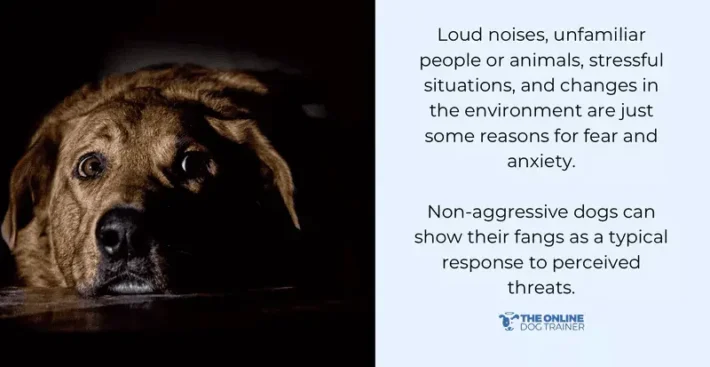
Credit: theonlinedogtrainer.com
Role Of Professional Help
Dealing with dog aggression can be hard for many owners. Professional help offers guidance and tools to manage this behavior.
Experts can understand why a dog acts aggressively and create a plan to improve behavior safely.
Choosing A Trainer Or Behaviorist
Look for trainers or behaviorists with experience in aggression cases. They should use positive training methods.
Check their qualifications and ask for references. A good professional listens to your concerns and explains their approach clearly.
- Certified in dog behavior or training
- Experience with aggressive dogs
- Uses reward-based training
- Clear communication style
- Positive reviews or referrals
When To Seek Veterinary Advice
Sometimes aggression comes from health issues. A vet can check for pain or illness that may cause aggression.
Seek veterinary advice if your dog shows sudden aggression or changes in behavior. Early medical help can prevent worsening problems.
- Sudden aggression without clear reason
- Changes in appetite or energy
- Signs of pain or discomfort
- History of seizures or neurological problems
- Before starting any new training plan
Maintaining Long-term Calm
Stopping dog aggressive behavior needs ongoing care. Keeping your dog calm takes time and patience.
Long-term calm helps your dog stay relaxed and friendly around people and other dogs.
Consistent Routine And Exercise
A regular daily routine helps dogs feel safe. Predictable times for walks and meals reduce stress.
Exercise uses up energy that might cause aggressive outbursts. A tired dog is a calm dog.
- Walk your dog at the same times each day
- Give at least 30 minutes of exercise daily
- Include playtime to keep your dog happy
- Use mental exercises like puzzle toys
Ongoing Training Tips
Keep training sessions short and frequent to build good habits. Practice commands daily.
Use positive rewards like treats and praise to encourage calm behavior. Avoid punishment.
- Teach basic commands such as “sit” and “stay”
- Practice socializing with calm dogs
- Reward your dog for calm responses
- Stay patient and consistent with training
Frequently Asked Questions
What Causes Dog Aggressive Behavior?
Dog aggression often stems from fear, territorial instincts, or past trauma. Lack of socialization and medical issues may also contribute. Understanding the root cause helps in managing and reducing aggression effectively.
How Can Training Stop Dog Aggression?
Consistent positive reinforcement training helps modify aggressive behavior. Reward calm actions and redirect negative reactions. Professional trainers can tailor techniques to your dog’s specific needs for better results.
When Should I Seek Professional Help For Aggression?
Seek help if aggression is frequent, severe, or worsening. A professional trainer or behaviorist can provide personalized guidance. Early intervention prevents dangerous incidents and improves your dog’s behavior.
Can Neutering Reduce Aggressive Behavior In Dogs?
Neutering can lower hormone-driven aggression, especially in males. However, it is not a guaranteed solution. Combined with training, neutering often enhances behavior improvement.
Conclusion
Stopping dog aggressive behavior takes time and patience. Consistent training and positive rewards help change habits. Understanding your dog’s triggers reduces stress for both of you. Stay calm and confident during every interaction. Seek help from a professional if needed.
Remember, every dog can improve with care and effort. Your bond grows stronger as trust builds. Keep working gently and never give up. Safe, happy moments are worth the work.

Emily Barker is the founder of ChillDogLife.com, a space dedicated to helping pup parents discover the best dog products, lifestyle tips, and cozy ideas for happier homes.
A lifelong dog lover, Emily combines her passion for pets with a knack for research to share trusted recommendations on everything from toys and furniture to health and everyday care.
Her goal is simple: to make life easier, stylish, and more joyful for dogs and the people who love them.
